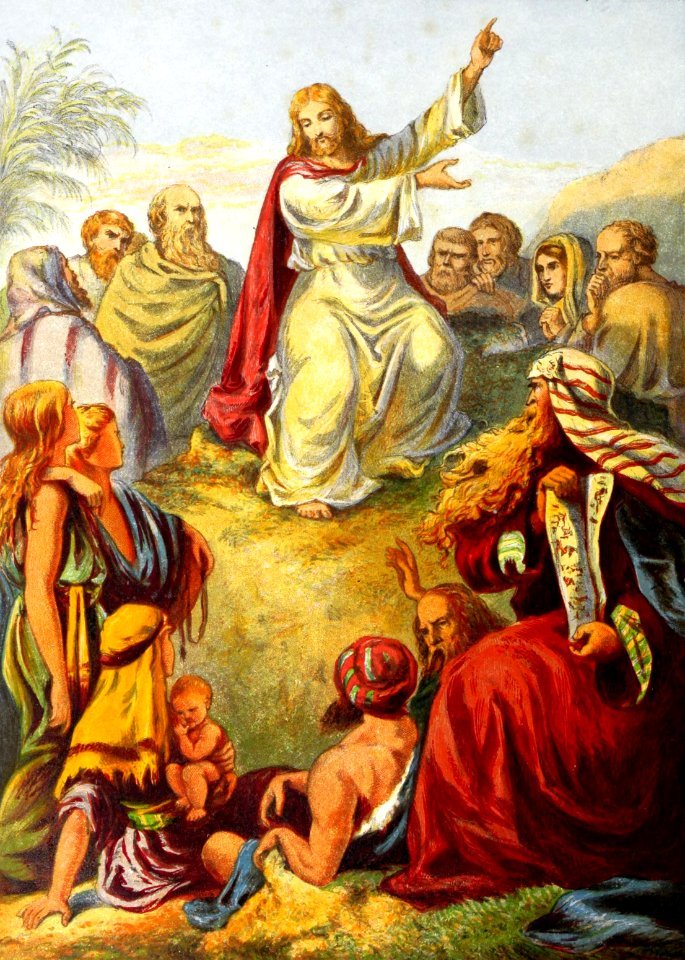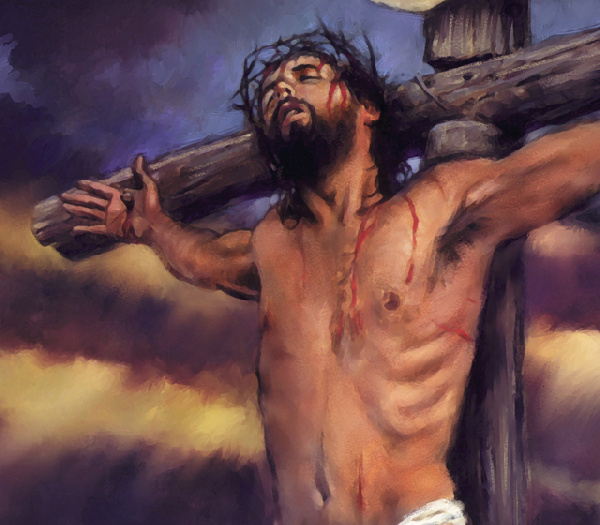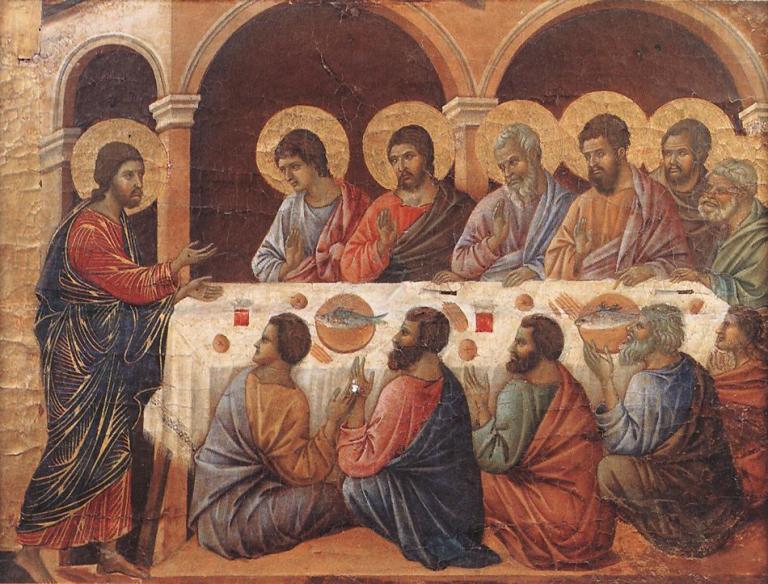Why was Jesus Christ crucified by the Romans?
The crucifixion of Jesus Christ is one of the most significant events in history, with profound implications for millions of people around the world.
It is a topic that has fascinated scholars, theologians, and laypeople alike for centuries and has been the subject of countless books, articles, and debates.
At its core, the crucifixion of Jesus is a story of betrayal, injustice, and sacrifice that has inspired and challenged people across the globe for over two thousand years.

Historical background
In order to understand the crucifixion of Jesus, it is important to have some historical context. Jesus was born in Bethlehem, a small town in Palestine, around 4 BC. At the time, Palestine was under Roman occupation, and the people of the region were subject to Roman rule and taxation.
The Roman Empire was a vast and powerful political entity, with a highly developed system of government, military, and commerce. The Roman occupation of Palestine was marked by conflict and tension, as the local population struggled to maintain their cultural and religious identity under the rule of a foreign power.
Despite the challenges of living under Roman occupation, Palestine was a place of religious and cultural diversity. The Jewish people, who made up the majority of the population, were deeply religious and held a strong sense of national identity.
They believed that they were God’s chosen people and that one day a Messiah would come to lead them to freedom and prosperity. This belief was a source of hope and inspiration for the Jewish people, and would ultimately play a key role in the story of Jesus’ crucifixion.
In addition to the Jewish people, Palestine was also home to a variety of other religious and ethnic groups, including Samaritans, Greeks, and Romans. This diverse cultural landscape was fertile ground for conflict and tension, and the Roman authorities were often called upon to intervene in disputes between different groups.
Against this backdrop of political and religious complexity, the story of Jesus Christ would unfold and ultimately lead to his crucifixion at the hands of the Roman authorities.
Religious conflict
The teachings and actions of Jesus were seen as a threat by the Jewish religious leaders, who felt that he was challenging their authority and undermining their traditions. Jesus’ message of love, forgiveness, and compassion was often at odds with the strict legalism and ritualism of the Jewish religious establishment, which saw him as a dangerous heretic.
As Jesus’ popularity grew among the common people, the religious leaders became increasingly concerned about his influence. They feared that he was leading the people astray and that his teachings would cause political unrest. This led to a series of confrontations between Jesus and the religious leaders, in which he challenged their authority and criticized their hypocrisy.
The tension between Jesus and the religious establishment came to a head in the days leading up to his arrest and trial. The religious leaders conspired to have him arrested and charged with blasphemy, a capital offense under Jewish law.
They arranged for a secret trial before the Sanhedrin, the Jewish governing council, which was presided over by the high priest Caiaphas. Despite the lack of credible evidence against him, Jesus was found guilty of blasphemy and sentenced to death.
Trial before Pilate
Under Roman rule, the Jewish people were subject to Roman law and could not carry out the death penalty without the approval of the Roman governor. Thus, Jesus was brought before Pontius Pilate, the Roman governor of Judea, to be tried and sentenced.
Pilate was a shrewd and politically astute governor, who was known for his harsh tactics and willingness to use violence to maintain order. He was wary of the religious leaders and their motives and was reluctant to execute Jesus without good cause. However, he was also under pressure from the Roman authorities to maintain order in Judea and to quell any potential uprisings.
The trial before Pilate was marked by tension and conflict, as the religious leaders pressed their case against Jesus and demanded his execution. Pilate questioned Jesus about his claims and actions but found no evidence of wrongdoing.
He tried to release Jesus, but the crowd of onlookers and the religious leaders demanded his crucifixion. In the end, Pilate yielded to their demands and sentenced Jesus to be crucified, despite his own reservations and doubts about the validity of the charges against him.
Political unrest
The political situation in Judea was volatile and tense during the time of Jesus, with many factions vying for power and influence. The Jewish people were deeply divided, with some advocating peaceful resistance to Roman rule and others calling for armed rebellion.
The Roman authorities were keen to maintain order and stability in the region, and they were quick to crush any signs of unrest or rebellion.
The trial and crucifixion of Jesus took on political significance against this backdrop of political tension. The religious leaders saw Jesus as a threat to their authority and influence, but they also feared that his teachings could be used to incite political rebellion against the Romans.
By putting Jesus to death, they wanted to stop any political unrest and keep their own power and control over the Jewish people.
The Roman authorities, for their part, were concerned about the potential for rebellion and unrest in the region. They saw Jesus as a potential troublemaker and were eager to quell any potential uprisings before they could gain momentum. By executing Jesus, they hoped to send a message to the Jewish people that they were in control and that any challenges to their authority would be met with swift and severe punishment.
Crucifixion
The crucifixion of Jesus was a brutal and barbaric form of execution that was reserved for the worst criminals and enemies of the state. It involved nailing the victim to a wooden cross and leaving them to die a slow and agonizing death. The process of crucifixion could take hours or even days, as the victim slowly suffocated and bled to death.
The crucifixion of Jesus was carried out by Roman soldiers, who were known for their brutality and lack of compassion. They scourged Jesus with a whip, beat him, and mocked him before leading him to Golgotha, the place of the crucifixion. There, they nailed him to the cross and left him to die, along with two other criminals who had been sentenced to death.
The crucifixion of Jesus was a traumatic and harrowing event that would have been deeply shocking and distressing to those who witnessed it. It was a stark reminder of the brutal and inhumane nature of the Roman rule, and of the powerlessness of those who were subject to it. Despite the horror and brutality of the crucifixion, however, it would ultimately become a symbol of hope and redemption for millions of people around the world.
Theological significance
For Christians, the crucifixion of Jesus is one of the most significant events in human history, with profound theological implications. According to Christian belief, Jesus was not just an ordinary man, but the Son of God, sent to earth to redeem humanity and reconcile us with God.
The crucifixion is seen as the ultimate sacrifice that Jesus made for humanity, as he willingly gave his life on the cross to atone for the sins of humanity. Through his death and resurrection, Jesus defeated death and sin and opened the way for all people to be reconciled with God.
The crucifixion is also seen as a symbol of love and compassion, as Jesus willingly endured the suffering and agony of the cross for the sake of others. It is a reminder that God’s love is selfless and sacrificial, and that we are called to love others in the same way.
The theological significance of the crucifixion has inspired countless works of art, literature, and music, and has been a source of comfort and inspiration for millions of people throughout history. For Christians, it is a reminder of the depth and breadth of God’s love for us, and of the hope and redemption that is available to all who put their faith in Jesus.
Conclusion:
The crucifixion of Jesus Christ is an event that has shaped the course of human history and inspired countless individuals over the centuries. While it is a deeply theological event for Christians, it is also significant from a historical and political perspective, shedding light on the turbulent times in which Jesus lived and the tensions that existed between the Jewish people and their Roman rulers.
The crucifixion is a reminder of the brutality and inhumanity of human beings, but it is also a symbol of hope and redemption, demonstrating the selfless love of God and the ultimate sacrifice that Jesus made for humanity. While it is a difficult and harrowing event to contemplate, it has inspired some of the greatest works of art, literature, and music, and continues to offer comfort and inspiration to millions around the world.
In conclusion, the crucifixion of Jesus Christ is an event that deserves careful consideration and reflection. Whether you approach it from a historical, political, or theological perspective, it is an event that has left an indelible mark on human history, and one that continues to inspire and challenge us today.

Sangtea Hmar is a passionate leader of the Youth Christian Fellowship at the Electric Vengthlang Presbyterian Church in Aizawl, Mizoram, India. He is the owner of Christiantone.com and is committed to spreading the word of God. He loves to mentor youth and help them grow in their faith.






